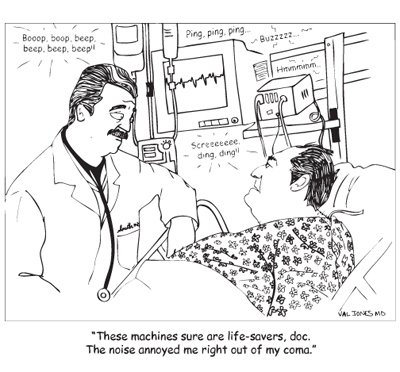May 25th, 2011 by admin in Health Tips, Research
No Comments »

An Embarrassment of Riches?
Much has been written here about the dietary supplement business, a multibillion dollar industry with powerful political connections, and about the woeful inadequacy of regulation which allows widespread marketing of supplements without a solid basis in science or scientific evidence.
The veterinary supplement market is a pittance compared to the human market, but still a billion-dollar pittance that is growing rapidly. Unfortunately, the resources available for good quality research in veterinary healthcare are also a pittance, and it is not at all unusual for our pets to suffer, or even be euthanized, as a result of treatable diseases for want of money to pay for needed care. So $1 billion a year spent on nutritional supplements may not be such a good deal if these products don’t effectively prevent or treat disease. Read more »
*This blog post was originally published at Science-Based Medicine*
October 15th, 2010 by Jeffrey Benabio, M.D. in Better Health Network, Health Tips
No Comments »

 Can your dog give you MRSA? Sharing with your dog is wonderful — unless you’re sharing bacteria. Pets can harbor harmful germs to pass on to you.
Can your dog give you MRSA? Sharing with your dog is wonderful — unless you’re sharing bacteria. Pets can harbor harmful germs to pass on to you.
Staphylococcus bacteria is a common cause for skin infections in people and animals. A virulent strain of staph, called MRSA, has made headlines for school outbreaks and fatal infections. MRSA infections are usually blamed on dirty locker rooms and contaminated gym clothes, but the source for an infection might be in your lap right now.
Here are five ways to avoid catching an infection from your pet:
1. Your pet’s mouth is not clean. It’s teeming with bacteria. Don’t let your pet lick your wounds. A dialysis patient once contracted a life-threatening pasturella bacteria infection from his beautiful golden retriever this way.
2. Keep open wounds covered. Contact between your wound and your pet could spread bacteria such as MRSA. Read more »
*This blog post was originally published at The Dermatology Blog*
June 5th, 2010 by RamonaBatesMD in Better Health Network, Health Tips
No Comments »

 It seems that each year, I just miss National Dog Bite Prevention Week, which is the third full week of May. As you know, it’s June already. But can it ever hurt to review such important information?
It seems that each year, I just miss National Dog Bite Prevention Week, which is the third full week of May. As you know, it’s June already. But can it ever hurt to review such important information?
More than 4.7 million people a year receive bites from man/woman’s best friend. If you have read this blog for very long, you know I dearly love my dogs — deceased ones (Columbo, Ladybug, and Girlfriend) and the living one, Rusty. I have no illusions that dogs bite, and given the right provocation I think mine would (although most of the time they are totally harmless and would just invite you in to rob me).
Most dog bite-related injuries occur in children 5 to 9 years of age. Almost two thirds of injuries among children 4 years or younger are to the head or neck region. Dog bites are a largely preventable public health problem, and adults and children can learn to reduce their chances of being bitten. Read more »
*This blog post was originally published at Suture for a Living*
August 18th, 2009 by Emergiblog in Better Health Network, Health Policy, True Stories
2 Comments »

She didn’t eat her dinner Friday night.
By 4: 30 am Saturday, the previously healthy 65-year-old female had a fever and lower extremity weakness. A family member heard her repetitive moaning. The patient got up to void, but could barely negotiate the one step up to the hallway. As she negotiated the hallway, she staggered.
By 5:00 am she was in the ER.
*****
The patient was taken to an exam room. Vital signs were taken and it was noted that the patient’s fever was “extremely high”. The doctor came into the room and the temp was re-taken. Extremely high. The patient had no insurance and was not verbal; the doctor discussed options with the family member.
The goal: find the source of the fever and begin treatment. A CBC, Chem 14, a urinalysis, an IV and hydration would be started. No lactate level would be done; the doctor stated it would be pointless to run a test that she already knew would be elevated based on clinical presentation. Blood cultures would be drawn, but not sent immediately. As the doctor explained, they are expensive and it would take days before the test results would be back.
In this facility, payment was expected at the time of treatment and a detailed estimate was provided to the family. The low end of the estimate was the deposit.
*****
By 8:30 am Saturday, the fever was still raging; the lab tests were normal. The patient was in ice packs with a fan in an attempt to lower the fever. An IV antibiotic was initiated; hydration was on-going. An internist and a neurosurgeon were consulted as the patient was experiencing lower back pain in addition to the profound weakness. The patient was admitted.
Further tests were proposed: lumbar x-ray to rule out spondylitis and, given the patient’s age, a chest x-ray to rule out occult pneumonia. The pros and cons of each test were fully explained along with rationale and the cost.
*****
The radiographic exams were normal. A loose bowel movement that morning had been blood-tinged. The patient had been medicated for pain. A second antibiotic was started. The next step would be an abdominal ultrasound, as no obvious source for the fever had been found. The rationale for the test and the cost were discussed and the family gave the go-ahead.
The spleen. Enlarged and mottled on ultrasound. A call was made to the family to discuss needle aspiration to rule out lymphoma.
*****
Monday morning the patient’s fever was down. She was eating. She was voiding. She was still weak, still moved slowly and awkwardly. She would be discharged home on oral antibiotics with the results of her spleen aspirate pending.
*****
It’s been a week now and the patient is acting 100% normally.
The patient was my dog, a 10-year-old, 70 pound Shepherd mix. We still don’t know what nearly killed her last weekend. The spleen aspirate was abnormal, but not lymphoma. The fact that the fever responded to antibiotics (as did the weakness) leaves us with the feeling that it was an infection in such an early stage that the source was not obvious.
I realize veterinary medicine is not human medicine, and a million holes can be found in my attempt to draw a parallel between them. But a few things crossed my mind during this experience:
(a) Tests were not done just for the sake of testing or because a printed standard said they should be. This was not template medicine dictated by any outside organization or government regulations.
(b) The doctor/patient relationship was unencumbered by insurance company approvals, government regulations, billing, coding or the number of patients that had to be seen in a certain time frame.
(c) there was full transparency regarding what each test would cost.
Maybe the human health care system can take a few pointers from what the veterinary world has been doing all along.
(P.S. I just realized you can read this story from the vantage point of ME being the third-party payer standing between the vet and my dog, deciding what would be “covered” – i.e. paid for. Interesting either way….)
*This blog post was originally published at Emergiblog*






 It seems that each year, I just miss
It seems that each year, I just miss 








